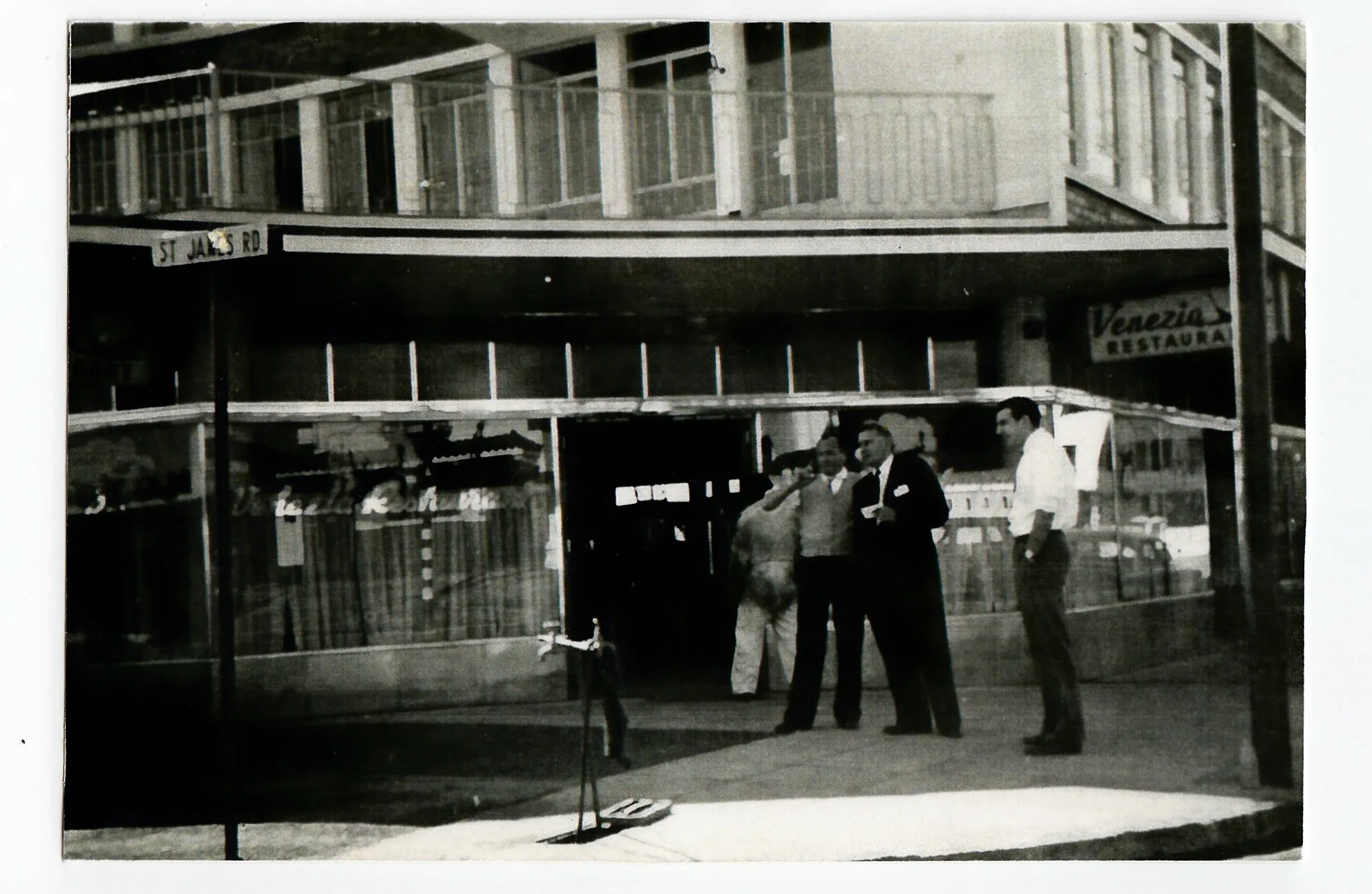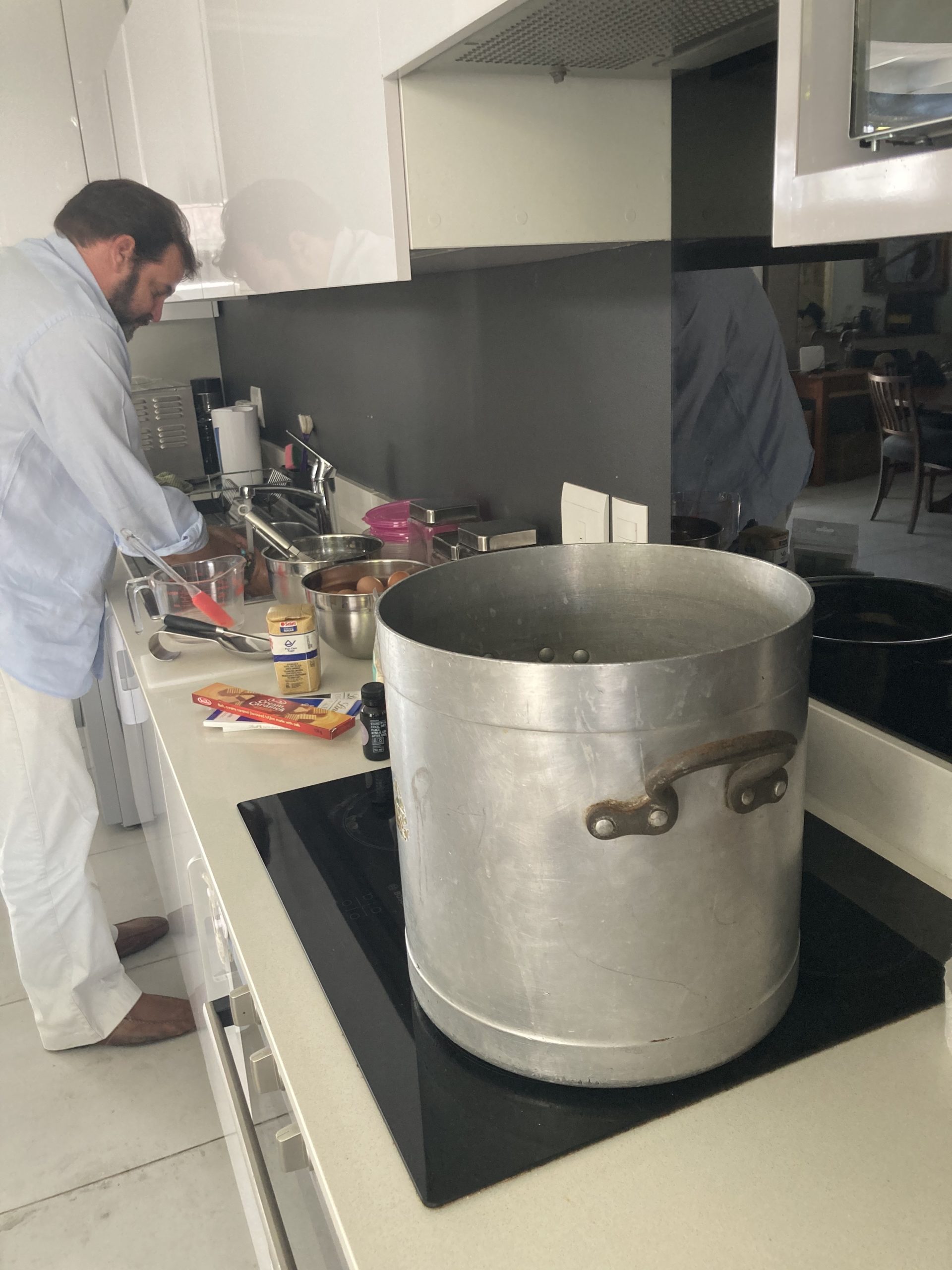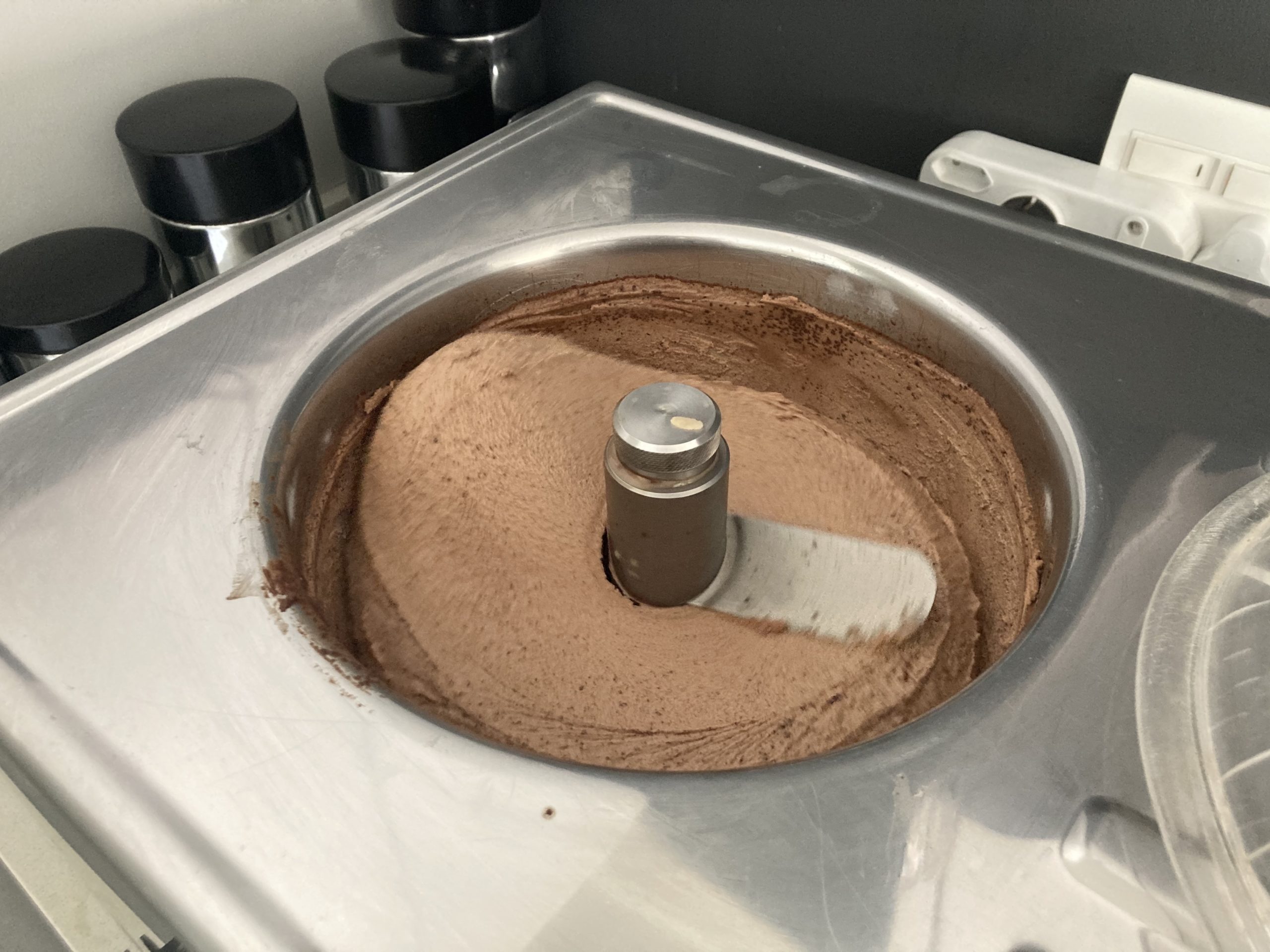
From left, Onorina Stefanutto, elder son Eddy, Aldo Stefanutto and three waiters outside the original Venezia below Albrigor Court on Main Road, Sea Point. (Photo: Supplied) Less
In 1953, after fulfilling a mandatory work immigration requirement in his trade of terrazzo, Aldo opened Venezia on the Main Road in Sea Point, then and now a mixed-use neighbourhood on the Atlantic seaboard of Cape Town. The restaurant had nine tables and jukeboxes. The centrepiece was a life-size gondola – the arcs of which served as coffee and ice cream counters – with seating booths on either side against the walls.
When they took the space, Onorina noticed a kitchen in the back, so she started cooking pasta there. “People did not even know what pasta was in those days,” said Franco Stefanutto, Aldo and Onorina’s younger son. So, Onorina stuck pieces of spaghetti and tagliatelle on the menu.
“There were no restaurants, no places where people can go like at home. When people went out, it was to a hotel and to a fixed menu,” he said of the Cape Town dining scene at the time. “As far as we were concerned, we were the only restaurant here. That was the only one.”


Carol Stefanutto, Franco’s wife, described Onorina’s cooking as quite simple: “They were really basic recipes, but everything was tasty and nice. I think that’s really what people wanted. It was novel – that’s the point.
“You know, standard South African food was a meat, potatoes and two vegetables. You got curries – that was the other thing – but it’s a completely different flavour from the piquant of the tomato, basil, garlic. So there were the different flavours that come into Italian cooking that then came into South African cooking. It was just a completely different way of cooking.
“Apart from the food, they brought a different concept to eating. Having wine with your meals: this was a completely new phenomenon. Franco’s father brought in the first espresso machine. You didn’t get espresso here. The first time I had a cappuccino was there,” Carol said.
Her first time at Venezia, though, was long before that. “I must have been about 10 or 11 and an aunt of mine lived in Sea Point and that was my treat, to go and get an ice cream. I do remember on a Sunday, that there was a queue right the way round the block.”


Making ice cream like he had in Italy proved tricky for Aldo: he couldn’t find peanut butter for the peanut flavour but, more important, the milk wasn’t rich enough. He had to put cream back into the milk.
“One thing about my dad: he had a tremendous nose,” Franco said. “If I tell you how many lemons were squeezed to make lemon ice cream, it must have been to the millions. He used to walk past me when I was squeezing and he says, ‘Franc, there’s a lemon here that’s not right. Don’t squeeze it because it will spoil the whole flavour of the other ones.’ He knew exactly where it was. He would find it.”
As the restaurant gained in popularity, it got bigger and bigger. First they extended the shop backwards until they ran out of space. Then they took over part of the garden at the back and enclosed it. And then they moved down the block to the corner of St James and Main roads where they had 40 tables and 15 waiters. “On Saturday nights, people used to turn those 40 tables three times,” Franco said.
“It was an era when Italian things became very popular. A lot of Italian films came out. I think it started with Audrey Hepburn in Roman Holiday, and people became very fascinated by anything Italian. There was a lot of Italian music, like Volare and Al di là,” Carol recalled.
She also reckoned that because many South African troops were stationed in Italy during World War II, and fought their way through Italy as part of the allied forces, it started a trend towards everything Italian.
“It was one of these things that happens. Something becomes the in thing of that time. Certainly Italian food did. It translated well, it moved well, it travelled well. It worked for the times, and it has never stopped working,” she said.
Aldo and Onorina bought a row of cottages and built a block of flats on top of the new restaurant, which they rented to tenants (that block is still called Venezia). By the early 1960s, Aldo was ill and couldn’t run the restaurant any more, so the Stefanuttos sold it to Silvio Lazzari and Francesca and Olivo Todesco.


“My great, great, great uncle 125 years ago made ice cream and he taught my grandfather and they slowly got the recipe right. My grandfather was very famous in Italy for making great ice cream which even at that stage was quite remarkable because Italy is where gelato comes from.” Aldo’s recipes are written in the northeastern Italian dialect of Friulian; Rob’s father, Franco, translated them.
“You know, for years I didn’t make it and then I started making it a couple years ago for friends. When I went to dinner parties, I’d take a couple tubs of ice cream,” Rob said.
The base may be a simple combination of egg yolks, sugar and milk but the method of “cooking” it – the whisking, pouring, timing and ingredient proportions depending on the added flavours – is ingrained in Rob from having done it over and over again. “It’s probably in my DNA that I know when it’s ready. I’ve got it down to an art; I’ve made a lot of it.”


Once the base is complete, any flavour may be added. In Aldo and Olivo’s day, the staples were lemon (cream or sorbet), apricot, chocolate and stracciatella, but strawberry, vanilla, tutti frutti (with glacé fruit) and rum & raisin also featured regularly.
Rob will still make lemon, chocolate and strawberry among the 12 original recipes – including sorbet with fresh fruit purée. But he has added to the repertoire with apple crumble, almond cherry (made with jam if fresh fruit is unavailable), pistachio with paste from Italy, and modernised the caramel flavour of old with a bit of Himalayan salt.
“Tastes have changed, so there are a couple of variations on some of the original flavours. The way it’s made today and the way it was made when we opened in ’53 is very different. Our recipe remains the same but there are different things you’ve got to look at.”


Rob has done primary costing and is engaging with investors. “I’ve decided to potentially partner with some restaurateurs and retailers I know. We’re going to do it in some form or other.”
Retirement from corporate life gave impetus to resuscitating the family ice cream business; Rob was most recently the managing director of Dogon Group Properties. “I just wanted to do something different from what I’ve done. I always loved cooking. I actually wanted to be a chef. I don’t know why I became a businessman.” DM/TGIFood
This story is partly an excerpt from Chow Town, a book in progress on the development of the restaurant culture in Cape Town, and how the city came to be the eating-out capital of the country.

No comments:
Post a Comment